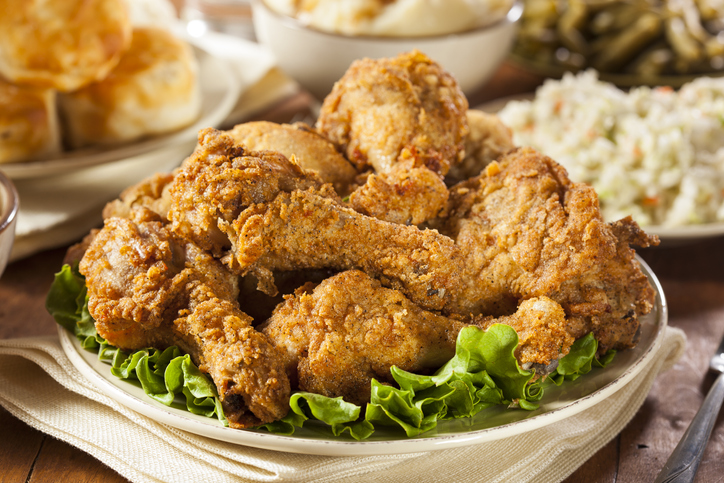Before I started grade school, my father and his brothers and his father and some of the neighbors saddled horses and gathered the cows and their baby calves from the big Cuny Table pasture every year. The green spring grass sprouted and pushed up through the old yellow stems of last year's trampled remnants frozen to the ground last winter by the hooves of hungry cows following the tractor drawn hay wagon as cowboys forked big bundles of hay to the ground for the daily sustenance of the herd.
But in springtime, the winds were warm and the sun was bright and the baby calves jumped and ran and played while their mothers ate their fill of hay and left room for the juicy, luscious green grass popping up from its winter nursery bed.
The men rose early and rode to the far end of the pasture and shooed the cows toward the big corral. The baby calves had become accustomed to sleeping curled into a warm little ball behind a stiff old yucca plant windbreak. A sleepy calf noticed that his mother had left for a time but did not get up because he knew she would be back soon. But today, the herd would not come back and the calves had to come too. A mother cow, coming to understand that this was a one-way march, would turn back from the herd and would fight mightily to evade the drag riders to get back her calf. But the knowledgeable cowboys understood. One cowboy would follow the intent mother, and maybe a few other similarly maternal parents and bring them back to the herd when the bovines, infant and adult, had paired up. The riders herded the cows and all the calves over the hill and down a draw toward a spring-fed stream of clear water. But this time the cowboys closed a gate behind the herd so they could not come back up the hill or walk out of the corral.

Meanwhile, back at the ranch house, the wives and mothers rose early to prepare for the noon branding meal. Huge bowls of potato salad, and home-made fruit pies and fresh baked bread and roast beef and fried chicken were loaded into the back of a Jeep or pickup or station wagon for the drive to the corral, with all the kids crammed into the back seat or back of the pickup cradling big Mason jars and larger spouted coolers of Kool-Aid and iced tea and coffee and fresh water.
We pre-school kids sat on the top rail of the wooden gate that swung on hinges and watched as a rider rode slowly into a small knot of cows and calves held close together by other riders in a corner of a smaller corral. The roper dropped a loop under the belly of a calf and gave the rope a little jerk just as the calf’s hind legs stepped into the loop.
The rider dallied the rope around the saddle horn. The pony, well trained, gently pulled the struggling calf through the tight knot of restless cows, across the dusty corral and to the branding fire. Two cowboys, usually the younger ones, would tip the calf onto his side and held him still while his hair was singed with a hot iron shaped like a brand. Another cowboy vaccinated the calf from viruses and diseases that could kill a herd unless they were prevented from spreading. When the calf was branded and vaccinated and castrated, he was let loose to find his mother in the knot of cattle. The moos of his mother led him to her caring side where she licked his sores and caressed his wounded pride as he marveled at this new glimpse of the larger world. When all the calves in that little bunch were branded, the bunch was pushed through a gate and into a larger but different corral. Then another little bunch was brought from the unbranded corral. At the end of the day, when all the calves were branded, the herd would be allowed to depart the corral for summer grazing in Fog Basin in the Badlands of South Dakota. (Everyone knows Fog Basin. Just ask anyone in Scenic or Red Shirt Village.)
The work was hard and dusty and tiring. At noon, the cowboys stopped for dinner (not just a little lunch like easterners had to get by with). (Of course, the cowboys expected a big supper too.) The feast of food was hauled from the Jeep or pickup or station wagon and spread over planks stretched between empty oil barrels or fat logs. Each cowboy walked beside the plank and heaped food onto a tin plate (more modern plastic plates were not available yet). At the end, the plank cowboys took a tin cup filled with hot coffee and then walked fast to find some clean dirt to sit in, preferably with a good, solid fence post to lean back on. (If a cowboy took too long, the coffee made the handle of the tin cup too hot to hold and the coffee might get spilled as the cowboy yelled in pain. Everyone else would laugh. The smarter cowboys wore their leather gloves to get their food and coffee.) Then all the little kids, like me, could walk the same plank. But Kool-Aid was by far the preferred drink of the younger generation.
My Aunt Bert was from Georgia. She had a great Georgia accent. It was fun just to listen to her talk. She was slim and short, shorter than any other woman in dad's family. Her husband, Uncle Joe, at six feet, seemed to tower over her. She was kind, and gentle, and happy. She seemed to make everyone around her happy, just by being there.
This year it was her turn to bring the chicken. Her chicken legs had a nice, crispy, seasoned, crust all the way around. The meat inside was still warm and tasty. The crunchy outer layer was wonderful. My mother made fried chicken sometimes, but it did not turn out like Aunt Bert's. (Now, when you get to Heaven and you run into my mother, do not tell her what I just said. I do not want to hurt her feelings, because she cooked a lot of great food for my sisters and brother and me. But I think even she might agree that Aunt Bert's southern fried chicken was special.)
As a matter of fact, I have searched many years for comparable fried chicken. I have never found any fried chicken that tasted like Aunt Bert's southern fried chicken.
Recently, sixty-five years later, my wife and I flew to Louisville, Kentucky to watch a grandson in the National Finals Archery Tournament. For supper we selected a restaurant offering southern food, called Dasha Barbour, 215 Main Street. It seemed the cooks were black, the waiter was black and about three fourths of the customers were black. I thought how much more southern can it get than this? I was encouraged. We must be in the heart of Southern Cooking. I selected Southern Fried Chicken from the menu and impatiently waited. I did not dare fogging my palate by sipping some meaningless antipasto alcoholic beverage while we waited.
The plate of chicken finally arrived! It was properly breaded. The crunchy crust was properly cooler while the meat inside was still warm from the oven. The plate was not smothered in gravy or other flavor polluting substances. I took my first bite, hoping. Hoping.
I rolled the bit of crust over my tongue. I inhaled to get all the flavors the delicacy could offer. My taste buds analyzed each and every molecule searching for Aunt Bert’s quintessential Southern Fried Chicken flavor. It was not there! It wasn’t quite there. It was close, very close. But there was some essential part that just could not be discerned. Maybe it should have had a sprinkling of red Georgia clay or a dash of Badland dust. I do not know.
I was disappointed. Now, don't take me wrong. I ate every crunchy and meaty tidbit found on the plate. I am prepared to agree that it is a fabulous example of Kentucky Fried Chicken or of Louisville's finest. But I guess Kentucky is not quite as far south as was my Aunt Bert's childhood Georgia home.
I am still searching.



